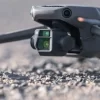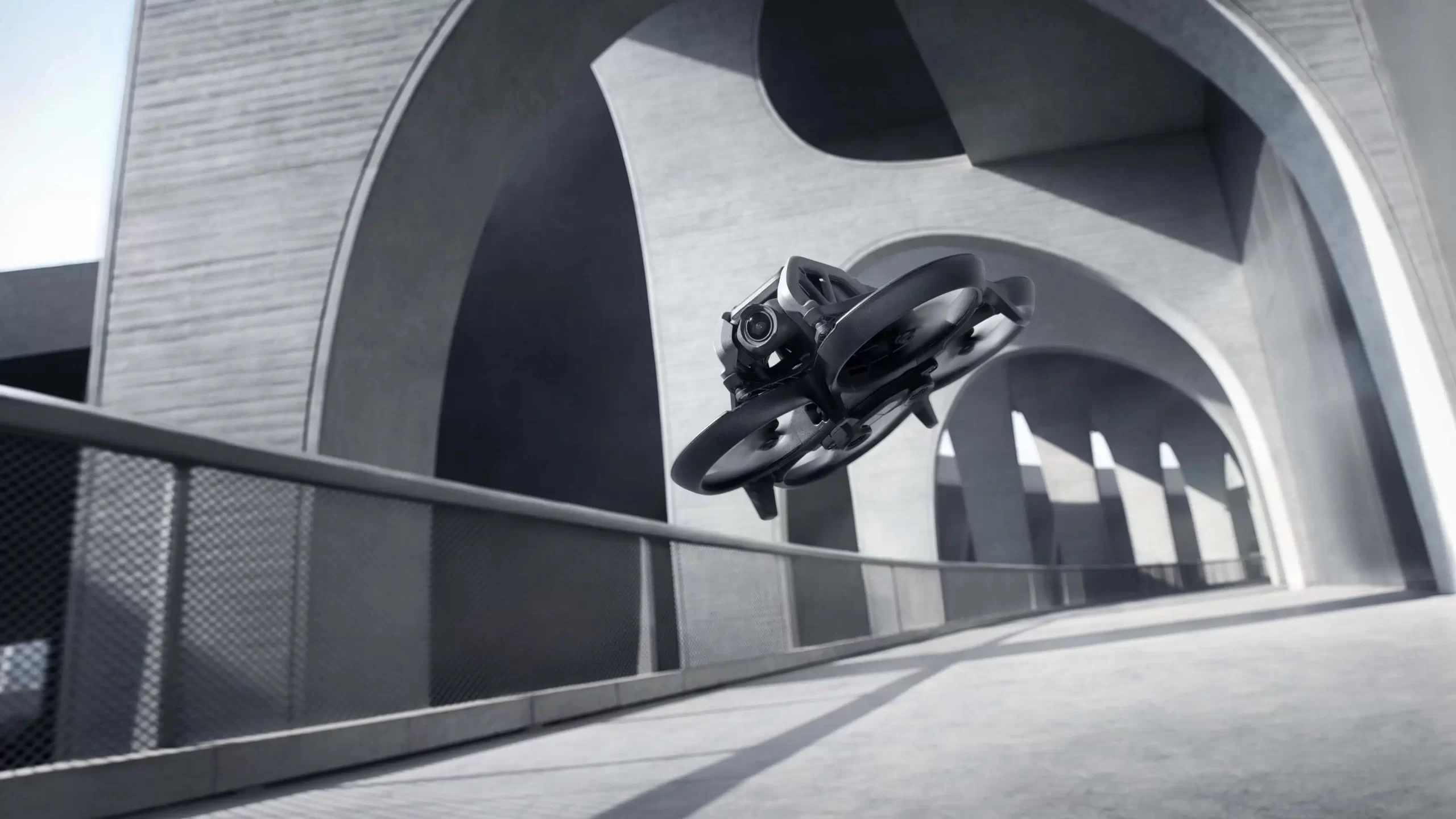
Drones are more than just toys, and in just a few years, they will likely make your life better and more comfortable. Although the concept of a drone has been around for several decades - mainly in a military concept - it wasn't until 2014 that consumer drones started picking up in terms of popularity.
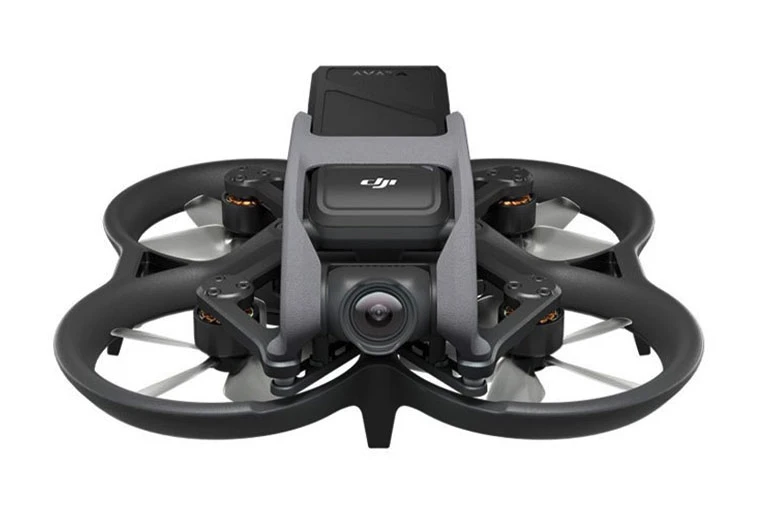
Specifications
| Dimensions | 3.2 by 7.1 by 7.1 inches |
| Weight | 410 g |
| Rotors | 4 |
| Obstacle Detection | No |
| Integrated Camera | Integrated with Gimbal |
| Video Resolution | 4K |
| Megapixels | 12 PM |
| Media Format | Internal, microSDXC |
| Remote | Dedicated with FPV Goggles |
| Live Video Feed | 1080p |
Pros
- You have tons of free space
- Easy-to-fly drone
- Designed to make the FPV experience
Cons
- Expensive
- Requires FAA registration for outdoor flight
- Slow to react to shifts in white balance
The best DJI Avata Pro deals
Drones are more than just toys, and in just a few years, they will likely make your life better and more comfortable.
Although the concept of a drone has been around for several decades – mainly in a military concept – it wasn’t until 2014 that consumer drones started picking up in terms of popularity.
These commercial flying machines were initially born as a tool for travellers and photographers to take better footage of their trips, but people soon understood how useful these machines could be in almost any aspect of our lives. Drone applications are endless for businesses, and we’re not far from the point when we’re going to wonder how we ever lived without drones in our daily lives.
If technology excites you and you want to try these flying machines, one of the best all-around drones for newcomers is the DJI Avata Pro.
DJI is a well-renowned drone manufacturer and is best known for its camera drones, such as the Mavic 3, but in recent years it broke into the high-speed, first-person view (FPV) drone space with the FPV Combo. The new Avata is smaller and has a lighter frame, meaning it can more easily fly in tiny spaces. It also offers speed for adventure-seeking pilots, but the absence of forward obstacle sensors may deter beginner pilots.
Fortunately, prop guards, and a well-protected camera enclosure mean the drone can be safe and keep flying even after a collision, but there are many concerns about Avata’s safety features that we’ll explore deeper in the next few lines.
Also, for people who have never flown FPV drones, it’s the closest thing to being a bird, and it allows for unparalleled drone control and, until recently, had a steep learning curve. The Avata Pro is aimed towards newcomers as it’s easy to use. However, seasoned pilots can also have a blast when flying this quadcopter.
Table of Content
Camera
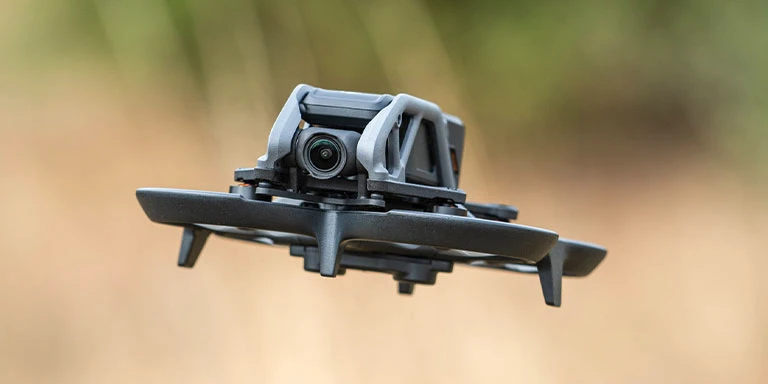
Photos
The Avata has a nose-mounted camera for both FPV viewing and video capture. The lens has a wide view of 12mm in full-frame terms, and it’s a Type 1/1.7-inch with an F2.8 lens and boasts 64% more surface area to capture light than the ½.3-inch sensor of its predecessor. A bigger sensor means better low-light condition photos, but it also provides an improved dynamic range if you choose to shoot in D-Cinelike.
The star of the show here is the video quality, but pictures are also staggering, as the Avata Pro can capture JPEGs with its 48MP CMOS sensor. You can take manual control of exposure or shoot in auto, but pictures often have a wonky horizon, so it’s not ideal to use the camera for still images.
With the camera in Auto mode, it operates in an ISO range of 100-6400, but manual settings allow it to reach as high as 25600 ISO for nighttime scenes. The colour profile generally delivers natural, pleasing colours, but this camera has quite a bit of oversharpening.
Shift in white balance can also be problematic. If you leave the camera set to automatic mode, it’s a little slow to react to changes in colour temperature, something you’ll likely have an issue with when you fly from an area with bright sunlight into the shade. For better results, in this case, we recommend the manual mode.
Videos
The DJI Avata is all about capturing immersive video, capturing in 4K up to 60FPS, 2.7K up to 100FPS, and 1080p up to 100FPS with DJI Goggle 2.
The maximum video bitrate is 150Mbps, and colour profiles include Normal and D-Cinelike. The latter is for colour grading in professional workflows, but Normal looks excellent, too, for those who prefer simplicity. Overall the video quality is superb, with fine detail present, excellent colour reproduction, and staggering image stabilisation.
In bright light, the 4K60 video is clear and colourful, but there’s some noisy grain present in the footage.
Although Avata‘s camera may look flawless, it has its drawbacks as this isn’t a drone focused on aerial photography /videography, and as such, has its limitations. This means you don’t get the same automated flight modes as other DJI drones, such as QuickShot, Dronie, and Helix, that capture fantastic shots without input from the pilot. On top of that, you can only look up and down without rotating the drone due to the single-axis movement.
Lastly, the Avata has a reasonable amount of internal storage, about 20GB, which is enough to hold around 20 minutes of 4K60FPS footage. The quadcopter supports a MicroSD slot, but finally, DJI made a drone with more internal storage than just 8GB.
Design and Controller
At 180x180x80mm and weighing in at 410g with the battery, the Avata is slightly larger and heavier than the average FPV drone. The kits are easy to use, work perfectly out of the box, and the intelligent flight batteries remove all the hassle and risks associated with traditional LiPo batteries.
The Avata‘s design is a Cinewhoop style where prop guards are built into the airframe to protect the propellers and provide a degree of resilience in case of crashes. This drone doesn’t fold up, and the camera, electronics, and battery sit above the prop guards and propellers.
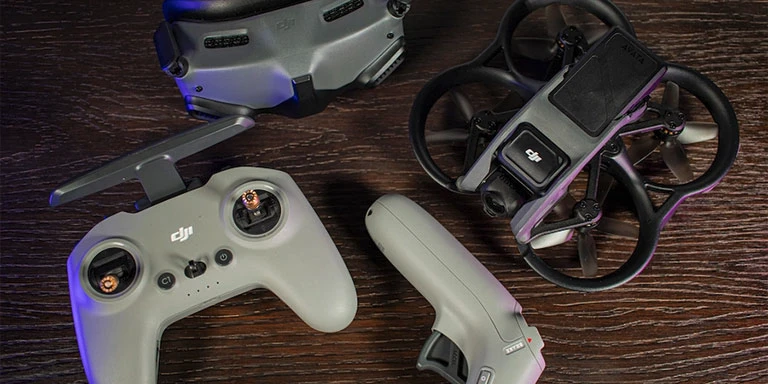
One questionable design choice is the placement of the USB-C port and microSD card slot. While other alternatives offer body-mounted ports on the bottom for easy access, the Avata has one on the blade rings. It takes a while to locate these slots as they’re hidden beneath a rubber seal, and it’s a very fiddly process to connect cables with the blade just millimetres away.
The Avata Pro comes with a different controller than we’re used to. FPV drones have a Motion Controller similar to a joystick with a trigger accelerator, a large brake button, an RTH button and a recording button. This joystick is ultra-lightweight and comfortable to hold, providing an intuitive way for beginners to control the drone.
However, the most exciting addition to the FPV drone is the DJI Goggles, and we’ll go over them in the next dedicated section.
DJI Goggles 2
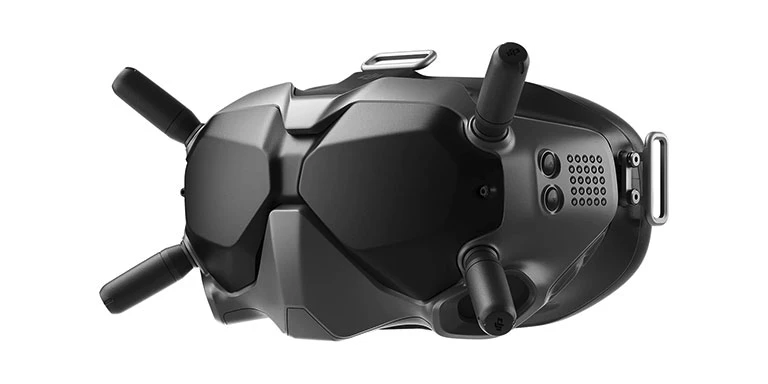
The Avata comes with goggles that look like virtual-reality glasses because, as the FPV name suggests, you can fly your drone with these on to have a first-person view while using your drone.
The Goggles support O3 transmission for a substantial control range, and they’re also extremely comfy with an adjustable head strap that makes them easy to ensure. You also have to deal with an external battery pack and its long coiled wire that connects the headset to power. So you need to keep the battery pack in your pocket or backpack while flying the Avata.
The eyepieces include diopter adjustment to set focus to match corrective lenses and an adjustable pupillary distance. These adjustments do a great job, but if you have strong visual astigmatism, for instance, you won’t ever really see a clear image.
You can also use the Goggle to change settings and access menus. A touch-sensitive panel, located just ahead of your right temple, supports swipe and tap gestures for navigation. In the menus, you can adjust video settings, set a custom geofence, and access the useful post-crash Turle Mode option, which flips the drone right side up after a crash landing.
The experience of flying your drone first-person is mind-blowing. You actually feel like an eagle, and the learning curve is non-existent, taking no more than a few minutes to get used to the controls before I was whizzing through the air. Thanks to the Motion Controller we mentioned earlier, it’s also effortless to manoeuvre.
Flying in first-person is nothing like flying a standard drone. The controls are much smoother and more responsive in the real world. You can easily get around buildings and obstacles on a typical drone, but in first-person view, it becomes much easier to crash it, and you have to get used to distances and speed.
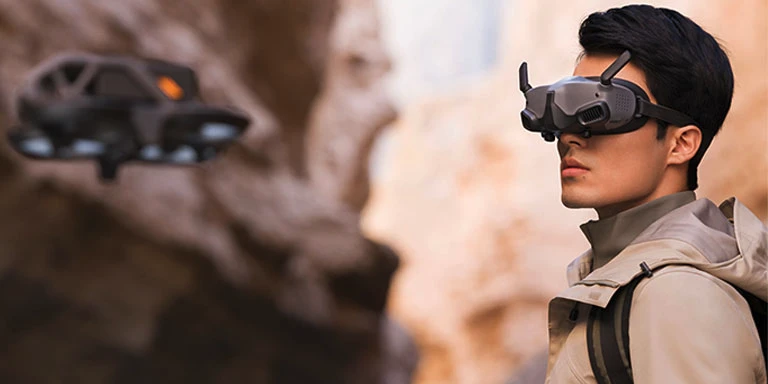
Software
DJI‘s newest FPV drone comes with FPV-specific software and has invaluable tutorials that will teach you about all the aspects of your system and simulator. The app isn’t the best, as the experience is a bit buggy and clunky, especially when switching modes.
Gimbal
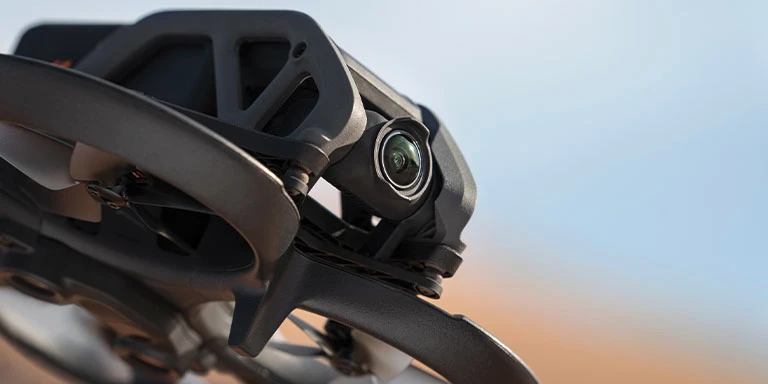
The Avata only provides mechanical stabilisation on the vertical tilt axis, with RockSteady electronic image stabilisation taking care of keeping the video looking smooth with the jolty movements of the drone. Overall the gimbal does a great job at video and image stabilisation if you factor in how fast and rapid this drone is.
The Gimbal is a single-axis one, and although it’s not as safe and stable as a 3-axis one, it does its job exceptionally well.
Flight and Stability
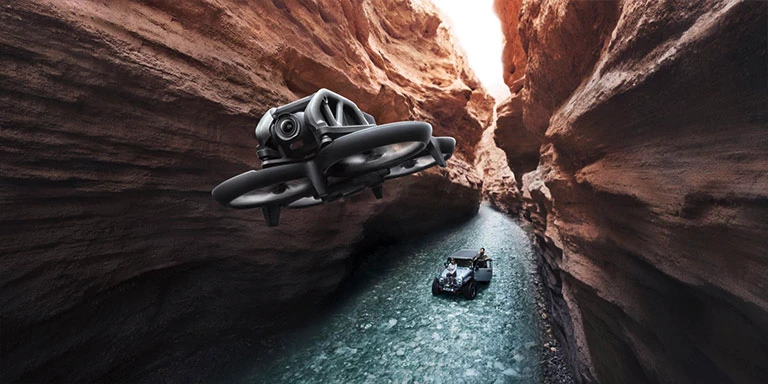
With a double tap on the motion controller’s red button, the Avata‘s motors fire up. The drone is incredibly easy to use, and the Motion Controller makes it even easier with the Goggles.
Once you wear the goggles, a white circle appears; wherever that circle is, it is where the drone will go. When you tilt the motion controller, the circle moves smoothly across your field of view and helps you massively in letting you know exactly where you’re flying.
Let’s now talk about safety, which was one concern of many pilots with this FPV drone. First of all, you need an FAA registration as the Avata weighs more than 250g. Furthermore, you also need to pass the Trust test and connect the Avata and Goggles to your smartphone for app-based activation. Without activation, the drone’s capabilities are seriously limited.
However, with FPV drones, your biggest concern will be to crash them into obstacles. Despite DJI’s wise decision to make propeller guards part of the airframe itself, our concern is more about the drone’s speed and most likely use cases.
Let’s face it, you’ll want to get the thrill of flying a first-person view drone at low altitudes even though it is not advised to do so. However, you must always use common sense and look for places free of obstacles and people. Needless to say, you don’t want to bring the Avata to a crowded park as it could severely damage a human if you crash into them.
The DJI Avata has a safety sensor, but not in every direction. And although the lack of forward obstacle sensors means you can squeeze the drone through really tight spaces and feel like a Top Gun pilot for a second, it is extremely easy to misjudge distances and crash into a tree branch.
Range
DJI claims in outdoor environments, clear of interference, the Avata will go up to 10km (6.2miles.) And while this may be true if you live in the middle of nowhere, in normal circumstances where you have power lines, buildings, and other obstacles, you will have significantly less range to fly.
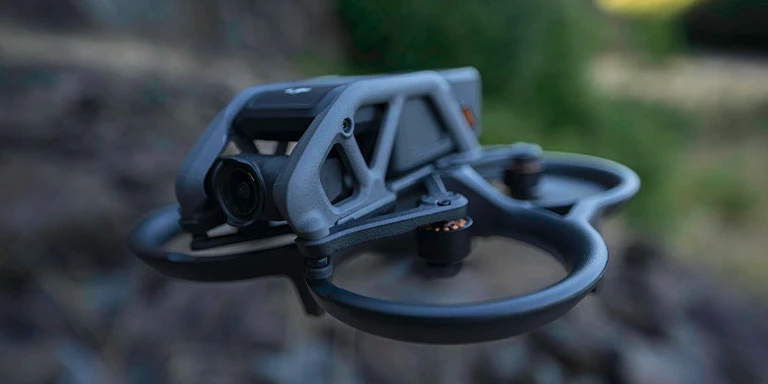
Flight Speed
This is one of the few downgrades of the Avata. The newest FPV from form DJI has a top speed limited to 97kph (60mph), which is much slower than its predecessor.
Battery Life
DJI says the battery should last about 18 minutes per charge, but in actuality, you get a couple of minutes less, in the 15 to 16 minutes range. With FPV drones, time flies by pretty quickly and the drone warns you when the battery is about to run out and starts to fly home.
Extra batteries cost $129 each, and DJI sells a Fly More Kit with two batteries and a four-battery multi-charger for $279
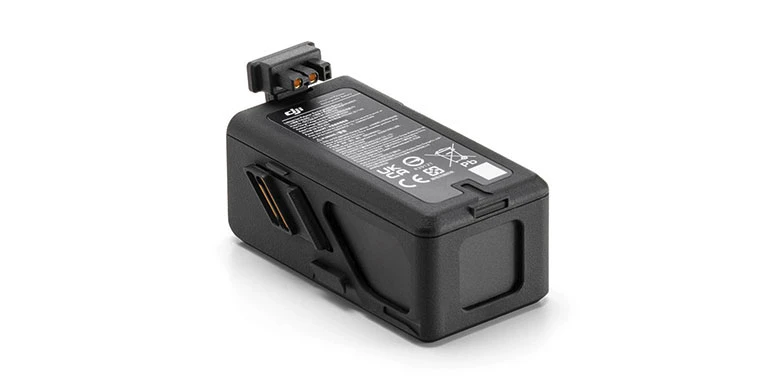
Price
The DJI Avata comes at the cost of $579, and while that doesn’t seem too bad, that’s designed for first-gen DJI FPV owners that already have a headset and controller to hand.
If you’re new to the FPV drone world, you’ll also have to get goggles and a controller, and the DJI Avata Pro View combo will set you back for $1,429, which is a bit of a high price to swallow, in our opinion. The kit also includes one intelligent flight battery, a single battery charging dock, a USB-C cable, a screwdriver, spare screws, and a gimbal protector.
Final Words
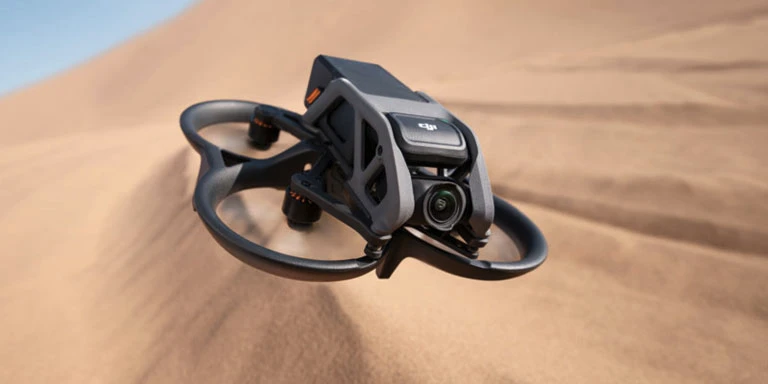
Flying the Avata is an experience of a lifetime, and it’s the easiest FPV drone to get up and fly comfortably and confidently in no time.
But you must understand that you need to take special care when flying as it is almost as risky to fly the Avata as it is fun to control. On top of that, the price is pretty high for the whole kit, which may be a significant deterrent for many pilots.
If you have flown drones before and want to try the experience of flying an FPV one, you have to try the Avata, you won’t regret it. The ridiculously intuitive motion controller smooths out shaky hands and lets you stop on a dime in a split second.
So should you buy the Avata? If you’ll take as much care with flight as you would when you get behind the wheel of an automobile and want to try a first-person flight experience, then we highly recommend this quadcopter.
FAQ
”

